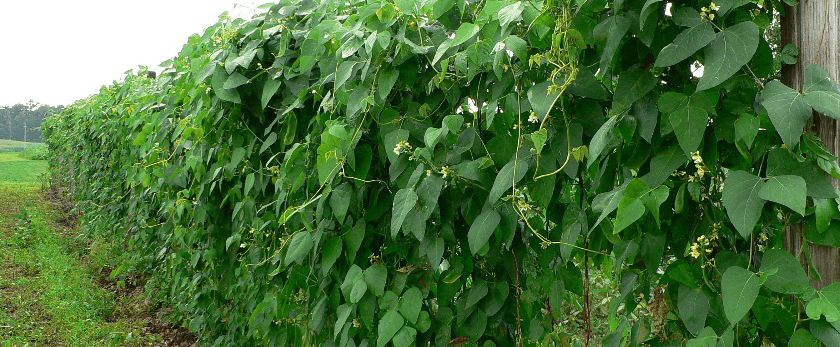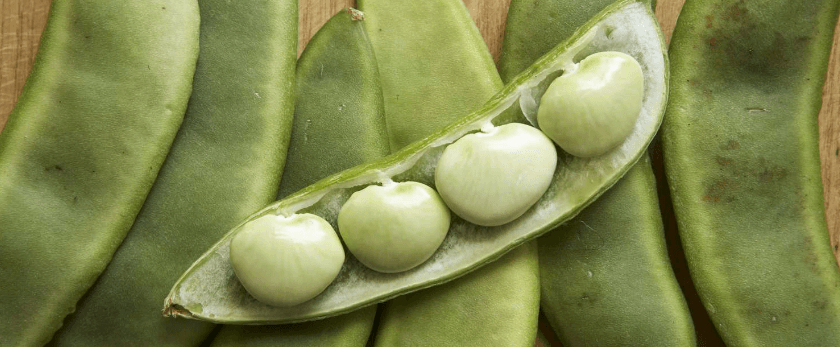Lima beans, also known as butter beans, are a delicious and nutritious addition to any garden. Not only are they easy to grow, but they also have numerous health benefits and are a great source of protein, fiber, and essential vitamins and minerals. Plus, growing your own lima beans is a sustainable and eco-friendly way to enjoy this tasty legume.
In this article, we will discuss how to grow lima beans, including the best care practices, the ideal time to plant, and common problems you may encounter. So, whether you're a seasoned gardener or a beginner looking to start your own sustainable garden, read on to learn how to grow lima beans and reap the rewards of this versatile and nutritious plant.
How to Care for Lima Beans
Lima beans are relatively low maintenance plants, but they do require some care to thrive. Here are the key factors to consider when caring for your lima beans:
Watering
Lima beans require consistent moisture to grow, but they do not like to be waterlogged. The best way to water your lima beans is to give them a deep watering once a week, making sure the soil is evenly moist. Avoid overhead watering, as this can lead to fungal diseases. Instead, water at the base of the plant to keep the leaves dry.
During hot and dry weather, you may need to water more frequently, but be careful not to overwater. Overwatering can cause the beans to rot and attract pests. A good rule of thumb is to check the soil moisture level by sticking your finger about an inch into the soil. If it feels dry, it's time to water.
Light
Lima beans thrive in full sun, meaning they need at least six hours of direct sunlight per day. If you're growing them in a container, make sure to place them in a sunny spot. If you're growing them in a garden, choose a location that receives plenty of sunlight.
If you live in a hot climate, your lima beans may benefit from some afternoon shade to protect them from the scorching sun. You can use a shade cloth or plant them near taller plants that can provide some shade.
Soil
Lima beans prefer well-draining, loamy soil with a pH level between 6.0 and 7.0. If your soil is too acidic, you can add some lime to raise the pH level. If it's too alkaline, you can add some sulfur to lower the pH level.
Before planting, make sure to loosen the soil and remove any rocks or debris. You can also add some compost or aged manure to enrich the soil and provide essential nutrients for your lima beans.
Fertilizer
Lima beans are nitrogen-fixing plants, meaning they can take nitrogen from the air and convert it into a form that the plant can use. This makes them a great addition to your garden, as they can help improve the soil's fertility.
However, if you notice that your lima beans are not growing well or have yellowing leaves, you may need to add some fertilizer. A balanced fertilizer with equal amounts of nitrogen, phosphorus, and potassium can help promote healthy growth. You can also use organic fertilizers, such as compost or fish emulsion, to provide essential nutrients without the use of chemicals.
Pruning
Pruning is not necessary for lima beans, but it can help promote better air circulation and prevent diseases. You can remove any dead or damaged leaves and trim back any overgrown vines to keep the plant tidy. However, be careful not to prune too much, as this can reduce the plant's yield.

What is the Best Time to Grow Lima Beans?
Lima beans are warm-weather plants and do not tolerate frost. Therefore, the best time to grow them is after the last frost date in your area. You can also start them indoors a few weeks before the last frost and transplant them outside once the weather warms up.
In general, lima beans take about 60-90 days to mature, depending on the variety. So, if you want to have a continuous supply of beans, you can stagger your planting every two weeks.
Common Problems with Lima Beans
While lima beans are relatively easy to grow, they can still face some common problems. Here are a few issues you may encounter and how to address them:
Pests
Some common pests that can attack lima beans include aphids, bean beetles, and spider mites. You can use natural methods, such as handpicking, to remove these pests. You can also use insecticidal soap or neem oil to control them.
Diseases
Lima beans can be susceptible to fungal diseases, such as powdery mildew and rust. To prevent these diseases, make sure to provide good air circulation and avoid overhead watering. You can also use organic fungicides to control these diseases.
Nutrient Deficiencies
If your lima beans are not growing well or have yellowing leaves, they may be lacking essential nutrients. Adding compost or organic fertilizers can help provide the necessary nutrients for healthy growth.
Conclusion
Growing lima beans is a rewarding and sustainable way to enjoy this nutritious legume. By following the care tips mentioned above, you can ensure that your lima beans thrive and provide you with a bountiful harvest. Remember to water consistently, provide enough sunlight, use well-draining soil, and fertilize when needed. And if you encounter any problems, don't worry, there are solutions to help your lima beans grow strong and healthy.
So, whether you're a seasoned gardener or a beginner, give lima beans a try and enjoy the satisfaction of growing your own food while contributing to a greener and more sustainable future. Happy gardening!










